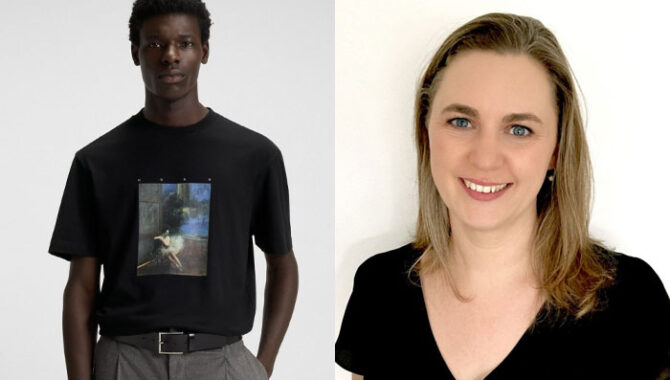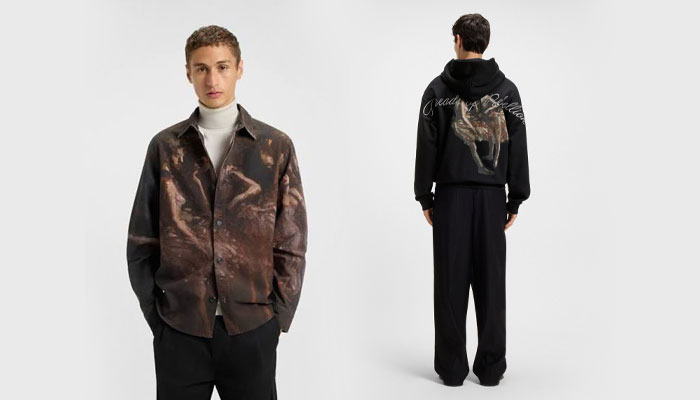—-
To stay in the loop with the latest features, news and interviews from the creative community around licensing, sign up to our weekly newsletter here

“Our relationship with Park Agencies has blossomed over the last five years”: In conversation with Carrie Hickman, Publishing and Licensing Manager at The Ashmolean Museum.
Carrie, can you remind us about the history of the Ashmolean and the nature of the collection it houses?
The Ashmolean Museum is the University of Oxford’s Museum of Art and Archaeology. Founded in 1683, it is the world’s first public museum and houses collections spanning more than twelve millennia, ranging from items from Jericho – 7000 BCE – and Egyptian mummies to contemporary art, telling stories from across cultures and across time.
The collection is centred around five curatorial departments: Antiquities, Western Art, Eastern Art, Coins and Casts. Over the last 342 years, the Ashmolean has developed from a cabinet of curiosities into the world’s greatest university museum of art and archaeology and is now home to over 1.4 million objects. The Museum is free to visit and open to all and last year we welcomed over one million visitors for the first time.
Congratulations! The Ashmolean is increasingly active in the licensing market. Why has the Ashmolean decided to develop a licensing programme?
The Ashmolean have been engaging in brand licensing for more than 15 years – originally in a limited and reactive way – responding to external requests to access the objects from prospective licensees. Some of our original licensees are still working with us today in categories such as stationery, apparel and food and drink.
Just before Covid hit in 2020, the Museum appointed Start Licensing as our agent as we looked to grow our licensing programme and increase awareness of our vast and varied collections. Every object in the collection tells its own story: many bear witness to historical events, others tell stories about the cultures and makers who produced them, and others embody evidence of cross-culture trading and artistic influence.
Our aim, with Start Licensing’s help, is to bring these stories to a wider audience, working with partners who are looking for new inspiration and who offer new and more diverse audiences in return.
You have undertaken a lot of research into the collections and archives to inspire licensees. Can you talk us through this process and how you decide what are the best assets to focus on for licensing?
I joined the Museum on the day the doors closed for lockdown in March 2020. My first few months in the role should have been spent wandering around the Museum getting a feel for the collections and our visitors’ responses to them. However, working from home meant that I had to do that remotely rather than in person. Luckily, I was already very familiar with the Museum having lived in Oxfordshire and visited frequently. Just as fortuitously, the Museum’s digital collections were really taking off at that time so I was able to spend a lot of time digging into the archives from home and begin to curate thematic collections – the picture researcher in me was having a ball!
Our focus for licensing is primarily based on stories and visuals… What looks great? How can they be presented cohesively while not being overwhelming? Reducing over a million objects to tasty bitesize chunks is not as easy – but is as fun – as it sounds. And do they tell the fascinating stories hidden amongst the galleries? A prospective licensee, instead of being overwhelmed by the size of the collection, can dip a toe into these smaller snapshots and identify areas of interest which we then build upon and navigate depending on the individual requirements of each partner.

Can you highlight a couple of the collections you have curated and why you think they are a good fit for licensing?
Japanese art is always a popular subject across all categories and our vast collection of textiles, ceramics and prints can offer something unique within a familiar aesthetic. The Museum’s Curator of Japanese Art is an excellent source of knowledge and so the stories accompanying the beautiful imagery are also readily available and factually reliable.
All of our curators are experts in their fields and teach within the University. They are a wonderful asset to the Museum and a great help to us in the licensing team, ensuring that our licensed products are interesting while remaining authentic
Another artist and maker of interest is May Morris. Everybody – particularly in the licensing world – is familiar with William Morris. May, his daughter, is less well known but equally as talented as her father. Recognised as one of the leading designer-makers of the Arts and Crafts movement, May was a pioneer and expert in design and embroidery as well as a staunch campaigner for women artists of her time – and by all accounts a force to be reckoned with!
The Museum holds one of the largest collections of May’s designs and drawings, ranging from roughly sketched ideas and watercolours to finished patterns, dating from her years spent managing the embroidery department at Morris & Co. through to the First World War and beyond. Her designs retain the recognisable and well-loved Arts and Crafts aesthetic whilst bringing something fresh to the table. We are beginning to introduce May to a number of our partners and are excited to see how we can represent her in today’s market.

You have worked with Park Agencies for a while now in the apparel market. How has the relationship worked from a creative perspective for the Ashmolean?
Our relationship with Park Agencies has really blossomed over the last five years. In the early days of the collaboration, we began with the collections curated by theme and from there have customised image searches and developed designs based on what they were finding was working well given current and upcoming trends.
The creative process has been really enjoyable and the designers at Park now have a really good understanding of what we have in the collection – visits to the Museum are always really useful to understand what we can offer. They also know that we will be flexible in regards to design: we always aim to be as accommodating as we can. The Ashmolean licensing team’s key strength is its size and autonomy – we are agile, collaborative and pride ourselves on our quick response times and knowledge of the collection.
A recent success story with Park has been the launch of an apparel collection with HUGO BOSS. Can you tell us more about this and the assets used for the collection?
The HUGO BOSS collection is based on two paintings from the collection by Jean-Louis Forain, a successful caricaturist, illustrator and French Impressionist painter.

A friend of Edgar Degas, the paintings are familiar but more intimate than the better-known Degas paintings as Forain studied individuals backstage, and at rest. The collection consists of eight designs and introduces two previously unused images from a relatively unknown artist from the collection into the licensing arena.
Last question! Over the years of working with Park, do you have a favourite t-shirt or garment?
My favourite garment has to be a heavy, oversize hoodie featuring an oil painting by Willem Frederiksz van Royen from the Museum’s Dutch Still Life collection which was part of the 2023 Topman range.

The image has been used so that it seemingly emerges from the dark background so iconic of the paintings. It’s big enough and warm enough to disappear into with a cup of tea on an autumn evening!
Lovely! Thanks again Carrie.
Enter your details to receive Brands Untapped updates & news.